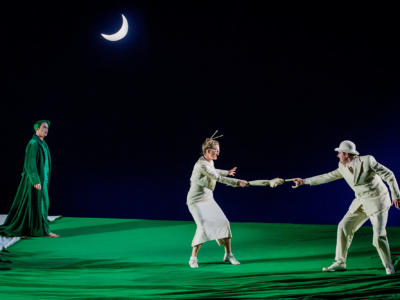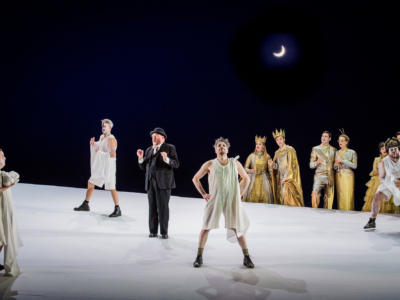A Midsummer Night's Dream: Character Guide
If you’re familiar with Shakespeare’s A Midsummer Night’s Dream, you’ll already be well acquainted with Britten’s.
In 1959, Britten had given himself less than a year to compose a new opera in time for the reopening of the Jubilee Hall in Aldeburgh. Because of this, there was no time for a brand new libretto to be prepared, meaning that Britten’s A Midsummer Night’s Dream libretto sticks very closely to the play’s original script.
Britten and his librettist, Peter Pears, reduced Shakespeare’s five acts to three, and over 2000 lines by half (Britten was more than comfortable cutting down the play, ‘the original Shakespeare will survive’). Surprisingly, even with all this editing, Pears added only one new line to Britten’s libretto, and cut just two characters, Egeus and Philostrate).
As in Shakespeare’s play, the characters are split into 3 groups; the Fairies, the Lovers and the ‘Rustics’ (as Britten liked to call them). The character groupings are defined by the instruments: ethereal sounds of the harp and harpsichord are notable in the fairy realm; romantic music that uses woodwind and strings can be heard in the lovers’ scenes; and lower brass is prominent for the rustics.
Fairies
Oberon – king of the fairies
Tytania – queen of the fairies
Puck – Oberon’s jester
Cobweb – fairy servant
Mustardseed – fairy servant
Moth – fairy servant
Peaseblossom – fairy servant
Royalty
Lysander – loves Hermia
Demetrius – engaged to Hermia
Hermia – loves Lysander but is engaged to Demetrius
Helena – previously engaged to Demetrius, still loves him
Theseus – Duke of Athens
Hippolyta – engaged to Theseus
Rustics
Bottom – the weaver
Quince – the leader
Flute – aspiring actor
Snug – the joiner
Snout – the tinker
Starveling – the tailor
With nearly 20 characters in the opera, familiarising yourself with them all will help you to enjoy the production even more! Unusually for an opera, A Midsummer Night’s Dream doesn’t have ‘dominant’ roles, instead all characters get their chance to shine (although Oberon, Titania and Bottom perhaps more so).
Now that you’re more familiar with the characters in the opera, find out the similarities between Britten’s Libretto and Shakespeare’s script.


